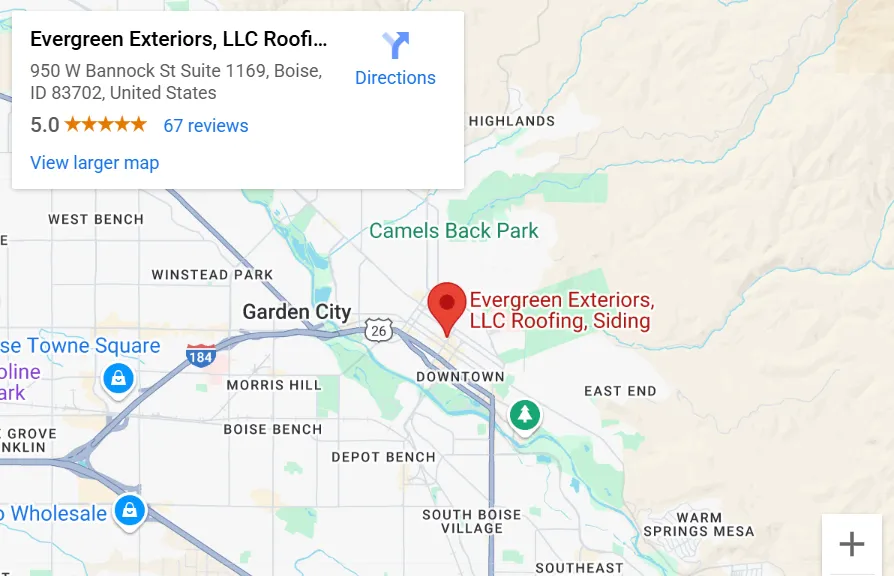Energy-Efficient Siding Options for Eco-Conscious Homeowners
Energy efficiency is an essential factor for homeowners who
want to reduce their carbon footprint and lower their utility bills. One effective
way to enhance a home’s energy performance is by choosing the right siding
material. With advancements in technology and growing awareness of sustainable
living, there are now several eco-friendly siding options available. These
materials not only improve insulation but also contribute to a greener
environment by using sustainable resources and reducing energy consumption.
The Importance of Energy-Efficient Siding
Siding serves as the first line of defense against external
elements, protecting a home from harsh weather conditions. Beyond aesthetics,
the type of siding used can significantly impact energy efficiency by reducing
heat loss in the winter and keeping interiors cool during the summer.
High-performance siding materials help to maintain a stable indoor temperature,
minimizing the need for excessive heating and cooling. This results in lower
energy bills and a more comfortable living space.
Insulated Vinyl Siding
Vinyl siding has long been a popular choice among homeowners
due to its affordability and low maintenance. However, traditional vinyl lacks
the insulation properties necessary for energy efficiency. Insulated vinyl
siding solves this issue by incorporating a layer of foam insulation beneath
the exterior surface. This added insulation enhances thermal performance,
reducing energy loss and improving the overall efficiency of a home. In
addition to energy savings, insulated vinyl is durable, resistant to moisture,
and available in various colors and textures.
Fiber Cement Siding
Fiber cement siding is another excellent option for
eco-conscious homeowners looking for durability and energy efficiency. Made
from a blend of cement, sand, and cellulose fibers, this siding material is
both sustainable and highly resistant to fire, pests, and harsh weather
conditions. Fiber cement provides excellent insulation, helping to regulate
indoor temperatures while also being a long-lasting alternative to traditional
wood siding. Its production process has a lower environmental impact compared
to other materials, making it a responsible choice for those committed to
sustainable living.
Engineered Wood Siding
For homeowners who love the natural look of wood but want a
more sustainable alternative, engineered wood siding is an ideal solution.
Unlike traditional wood, which requires significant tree harvesting, engineered
wood is made from recycled wood fibers bonded with resin. This process creates
a strong, durable siding option that resists moisture, pests, and warping.
Additionally, engineered wood siding can be treated for enhanced insulation
properties, further contributing to energy efficiency. Its eco-friendly
composition and energy-saving benefits make it a great choice for
green-conscious homeowners.
Metal Siding with Reflective Coatings
Metal siding, particularly aluminum and steel, is a
sustainable option that offers impressive energy efficiency when combined with
reflective coatings. These coatings help to reflect sunlight, preventing heat
absorption and keeping interiors cooler during warmer months. Metal siding is
also highly durable, resistant to weather damage, and recyclable, reducing
waste and promoting sustainability. Homeowners who choose metal siding benefit
from its low maintenance requirements and long lifespan, making it a
cost-effective and environmentally friendly investment.
Natural Wood Siding with Eco-Friendly Treatments
While traditional wood siding may not be the most
energy-efficient option on its own, certain eco-friendly treatments can enhance
its insulation properties and sustainability. Responsibly sourced wood from
managed forests ensures minimal environmental impact, while treatments with
non-toxic, weather-resistant coatings improve its durability. When paired with
proper insulation, natural wood siding can provide excellent thermal
performance. For those looking to maintain a classic aesthetic without
compromising on eco-friendliness, this option can be a great balance between
sustainability and style.
The Role of Installation in Energy Efficiency
Beyond selecting the right material, proper installation
plays a crucial role in maximizing the energy efficiency of siding. Gaps,
cracks, or improper sealing can lead to air leaks, which compromise insulation
and increase energy consumption. Professional installation ensures that siding
is correctly fitted, minimizing heat loss and improving overall performance.
Adding house wrap or additional insulation beneath the siding further enhances
energy efficiency, creating a well-protected and thermally stable home.
Making the Right Choice for Your Home
Choosing energy-efficient siding depends on several factors,
including climate, budget, and personal aesthetic preferences. While some
materials provide superior insulation, others offer a combination of
sustainability and durability. Homeowners should consider the long-term
benefits of their siding choice, factoring in energy savings, maintenance
requirements, and environmental impact. Consulting with a professional can help
determine the best siding option based on the unique needs of the home.
Social Profiles
Yelp : https://www.yelp.com/biz/evergreen-exteriors-boise-3
Facebook : https://www.facebook.com/p/Evergreen-Exteriors-Roofing-Siding-100093633170696/




